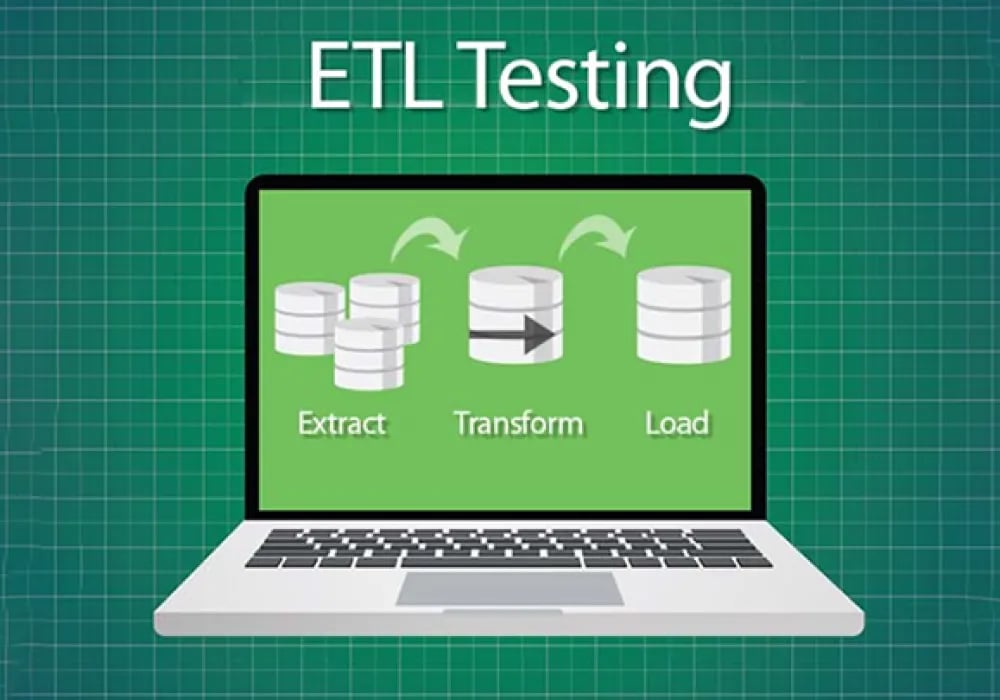Jul 16, 2018
What Is ETL Testing & How To Enforce It In Data Warehouse?

Extraction, Transformation, and Loading are the three tenets that will help you in checking the efficiency of the data.
Before we go any further, do you know what ETL testing is?
Majority of you I bet don’t know much about it.
And that’s the reason for me to write this blog. Here you will learn all about ETL testing and its utilization in the data warehouse. So, without any further ado, let’s get you started.
Why ETL Testing is required?
To check the correctness of data change against the signed off business necessities and principles:
- To confirm that that expected data is loaded into data mart or data warehouse center without loss of any data.
- To approve the precision of compromise reports (if any e.g. if there should arise an occurrence of examination of the report of exchanges influenced through to bank ATM – ATM report versus Financial balance Report).
- To ensure finish processes meet performance and scalability requirements.
- Data security is additionally in some cases some portion of ETL testing.
- To assess the reporting efficiency.
When to Start ETL Testing?
ETL stands for Extraction, Transformation, and Loading. ETL Testing is a sort of testing strategy which must be done with human cooperation where it needs to test the Extraction, Transformation, and Loading of information when moved from source to target with respect to the Business Requirements.To get data from the source and load it into the data warehouse –a procedure of duplicating information starting with one database then onto the next. It also includes checking the data at different stages that are being utilized source and destination.
Along these lines, the information is first extracted from the Online Analytical Processing (OLTP) database and changed by the information distribution center blueprint and after that stacked into the Data warehouse. Be that as it may, the information could likewise be from a non-OLTP source.
- Extracting information from outside sources
- Transforming it to fit operational needs (which can incorporate quality levels)
- Loading it into the end target (operational information store and data warehouses)
Challenges in ETL Testing
ETL Testing is not quite the same as application testing since it requires a data-driven testing approach. Some of the challenges in ETL Testing are:
- ETL Testing includes contrasting of expansive volumes of information ordinarily a large number of records.
- The information that should be tried is in heterogeneous data sources (eg. databases, flat files).
- Data is regularly changed which may require complex SQL questions for looking at the information.
- ETL testing is particularly subject to the accessibility of test information with various test situations.
In fact that there are slight varieties in the kind of tests that should be executed for each task, underneath are the most well-known sorts of tests that should be improved the situation ETL Testing.
How Do We Test ETL?
Testing, ideally by a free gathering, ought to be embraced to confirm and approve the ETL procedure, in this way guaranteeing the quality, fulfillment and heartiness of the information distribution center. There are assortments of instruments that can be utilized for ETL testing. There are a few levels of testing that ought to be performed in ETL testing. Some levels of testing are defined below:-
Requirements Testing:
- Are the requirements finished?
- Are the requirements testable?
- Are the requirements clear (is there any uncertainty)?
Data Validation Testing:
- Guarantee that the ETL application appropriately rejects, replaces with default esteems and reports invalid data.
- Confirm that information is changed accurately as indicated by framework prerequisites and business rules
- Look at interesting estimations of key fields between source data and warehouse data.
Integration Testing:
- Check that ETL functions work with upstream and downstream processes.
- Confirm the underlying heap of records on data warehouse.
- Test error log generation.
Report Testing:
- Check report data with the information source.
- Make SQL questions to confirm source/target data.
- Check field-level data.
Client Acceptance Testing:
- Confirm that the business rules have been met.
- verify that the framework is worthy to the client.
Execution Testing:
- Check that data loads and queries are executed within the timeframe.
- Confirm stack times with different measures of information to anticipate adaptability.
Regression Testing:
- Guarantee that current functionality remains flawless at whatever point or new code is implemented.
Benefits of Utilizing ETL and Data Warehouses
Besides essentially enhancing coordination, the advantage of utilizing ETL and data warehouse is accomplishing quicker response time. The use of data distribution centers permits the exchange and the examination procedures to work autonomously. This empowers ventures to accomplish more prominent proficiency both at the source and the data warehouse transactions processing and also faster and better querying and analysis.
The second huge advantage of using ETL is enhancing overall data quality. The three-advance procedure of extricating, changing, and stacking empowers ETL analyzers to audit the rightness of data in each step. Therefore, ETL analyzers can distinguish and solve data errors where they occur — in the source, in the data warehouse, or during the transformation process.
Finally, using ETL additionally advances greater organizational and operational efficiency. The ETL procedure guarantees that changes made to source data, paying little heed to where the progressions are started, will be reflected in the data warehouse. This enables diverse branches of ventures to actualize their own particular ad hoc software or systems while being assured that the data they use reflect the changes made by other departments. This engages them to take activities that will profit their specializations while moving the entire organization forward.
We, at BugRaptors, while performing Web Accessibility testing we are also implementing thoughts to make sure that we can manage required tasks and perform accessibility testing by keeping in mind all the positive and negative scenarios.